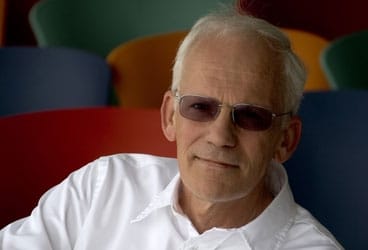
VVJonesSt
In 1967, Dyer Jones, the Regatta Director of the 32nd America’s Cup, began his 40-year involvement in the Cup “as a sailor carrying sails up and down the dock” for the Columbia syndicate. Since 1974, when Jones started his race management career, he’s been involved in 11 America’s Cups. The 32nd will be his twelfth. Jones has been living in Valencia preparing for this event since July 2004. We caught up with Jones as he was counting down the days to the start of Louis Vuitton Act 13.How long have you been in Valencia?My first official visit was in November of 2003, and I’ve been here since July of 2004.Do you think four years was too long a gap between America’s Cups?No, I don’t, for two reasons. I don’t think we could have accomplished as much as was accomplished having held twelve regattas prior to this. If we hadn’t held twelve regattas, well, you could have had a different scenario. One of the other things, to be honest, is the huge amount of infrastructure work that is required in creating a venue. This is a magnificent venue. It’s not finished yet, but when the grass and trees are finally green, it will be a magnificent venue. It’s huge, enormous, the biggest yet. You can’t compare it to San Diego, because there everyone was spread out from Mission Bay down to Coronado. Here, the bases are large. How many people do you have under you?I have three teams of people, the race officials (measurers, umpires, race committees). That’s a group of about 50. As I need less people, because I have fewer yachts to worry about, the team gets smaller. Then we have the Meteorological Data Service, which is a program of 30 meteorological stations providing information 24/7/365. It’s designed to keep spitting data out whether we’re awake or asleep, because the teams want historical data for the design of their rigs, sails, and boats. Now they’re using the station data for training. They’ll receive and use that data until just before the preparatory gun during the racing. I have 10 people working on technology, a couple of IT people, a couple of product engineers, and the rest servicing the weather buoys and the land stations. We check the calibration every week. We also have three meteorological boats, which are, in effect, mobile buoys, which we can put in areas we’re racing in that aren’t covered by our existing buoys. In addition to the MPS, I have an operations staff run by Niccolo Porzio. Niccolo has a team of 16 people. Their job is to make sure that all the equipment– radios, boats, marks– everything is ready to go every day. We have under our custody and care several million Euros worth of equipment that belongs to ACM. Part of this is a fleet of 70 boats. We call it Niccolo’s navy.Will the RC be using an open mike system so the teams can hear what the RC is thinking and talking about?Yes, we have something we use called the safety radio. We require every yacht to carry one, and it’s the only form of communication allowed during racing. All the radios, cell phones, pagers, and air cards for the laptops get turned off. The yacht, and the yacht’s chase boat-which we require to be on the course at a reasonably close proximity to the umpire boat-are both required to carry safety radios. The RC and umpires also have the radios so the RC can talk to the yachts. To assure that we’re all on the same page we go by each compound before the event begins, and talk with their afterguard, the people who we have to work with every day. We’re providing a service.How much time will you spend on the water during the LVC?I probably will not be out every day. We have two race circles, and when we have both going there needs to be coordination because of emergencies or operational issues. It’s hard for me top deal with that if I’m in the wrong area. If I’m in the right area, it’s OK. I’ll get out about half the time, but usually not until a few minutes before the start. During the AC itself, and the semifinals, I’ll be on the water all the time, because it’s a lot simpler with only one race circle.









